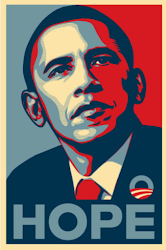reception theory
Look back at the adverts you have been analysing in last week's lessons on Reading an Image and media codes (RBK 50 Cent and one of your choice).
1) What are the preferred, negotiated and opposition readings for the RBK 50 Cent advert?
-Preferred-the producer wants the audience to feel bad for him because of his past with gun violence and that 50 cent feels a sense of remorse for getting involved in that type of setting that lead to him being shot 9 times.
-Negotiated-some audiences may have a bias toward 50 cent and therefore judge him for getting shot and may even blame him.
-Opposition-some audience that see this advert may not be familiar with 50 cent because they don't listen to rap music and therefore wont be affect by the producers intention behind putting him in the advert. Some audience may take the fact that Reebok is putting 50 cent on the advert as a way of them promoting gun violence or agreeing with the gang culture.
2) What are the preferred, negotiated and opposition readings for the advert of your own choice that you analysed for last week's work?
-preferred: the producer wants the audience to feel that Obama can achieve what the audience want on the behalf of them and he can make a better country, he is 'hope' for the future.
-negotiated: the producer want the audience to think good of Obama but the audiences may not like Obama because he is a politician.
-opposition: the audiences may dislike Obama a lot and not want to see this poster as they do not support politicians.
Part 2) Reception theory fact sheet #218
Use our extremely useful A Level Media Fact sheet archive to find Fact sheet #218 Spotlight on Stuart Hall: Encoding, Decoding and Reception Theory. Read the fact sheet and complete the following tasks and questions:
1) Complete Activity 1 on page 2 of the fact sheet. Choose a media text you have enjoyed and apply the sender-message-channel-receiver model to the text. There is an example of how to do this in the fact sheet (the free diving YouTube video).
Activity 1
Choose a media text you enjoy, such as a podcast, television programme, magazine or YouTube channel. Can you apply the SMCR model of communication to it? It doesn’t matter which genre or media form your choice takes.
-Leo Skepi's podcasts:
-the sender is Leo.
-the message is anything happening in the world and society at the moment and he voices his opinions on topics that he agrees and disagrees with.
-the channel is Apple podcasts and YouTube.
-the receiver is the people who listen to him.
2) What are the definitions of 'encoding' and 'decoding'?
Encoding means constructing a message using a shared code and language. Someone else can then read it who shares that cultural understanding and is able to decode it.
3) Why did Stuart Hall criticise the sender-message-channel-receiver model?
He didn’t believe that the ‘message’ had a fixed meaning, He thought that it was limiting to think so.
4) What was Hall's circuit of communication model?
Hall proposed instead a model which was non-linear – in other words, the different ‘moments’ in the process (Hall’s term for each aspect of the model, which he called a circuit of communication) could feed back into each other.
5) What does the fact sheet say about Hall's Reception theory?
He believed that media products as complex signs are poly-semic, meaning they have multiple meanings depending on the background and experiences of the person consuming the text.
-Reception Theory tells us that there is:
• a preferred or hegemonic reading (the one intended by the producers of the text).
• a range of potential negotiated readings (where the preferred reading may only be partially accepted by the audience for differing reasons specific to their cultural background).
• An opposition reading (where the message of the text is rejected entirely by the audience).
6) Look at the final page. How does it suggest Reception theory could be criticised?
-It is predicated on the idea that all audiences are able to distinguish between dominant and hegemonic readings, and he is motivated to look for proof that popular culture maintains social institutions, for example, in order to support cultural hegemony.

Comments
Post a Comment